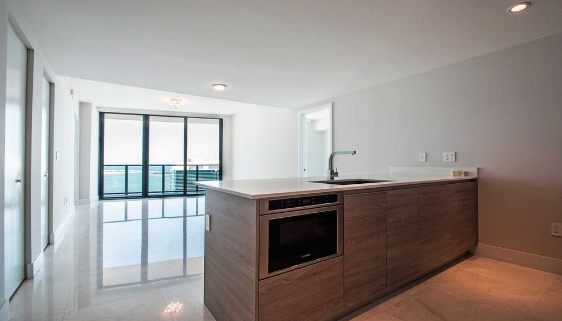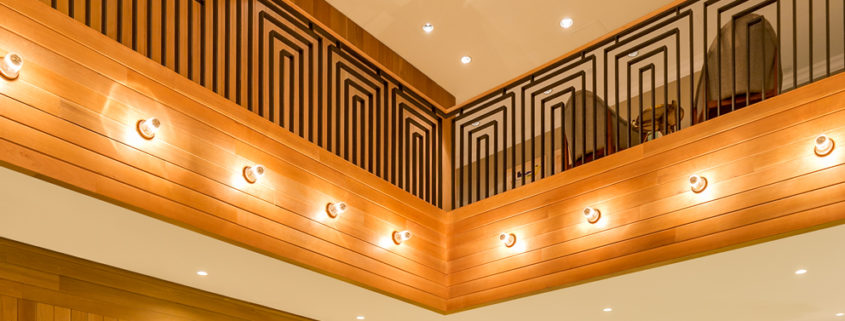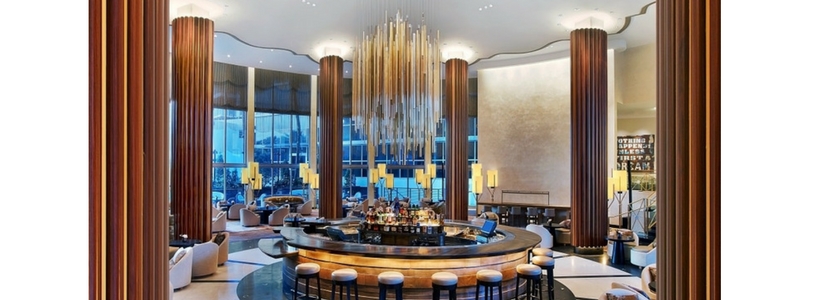Q&A: Prestige’s Broker Tony Rodriguez-Tellaheche Strives to Be Different and Finds Success

Tony Rodriguez-Tellaheche, co-founder and managing broker of Prestige Realty Group, sat down with SPACiO Design Build to discuss today’s luxury real estate market in Miami. The boutique brokerage firm focuses on luxury homes and high-rise condominium sales. As a Miami native, Tony has seen the transformation of Miami from a beachside destination into a bustling and sprawling metropolis attracting buyers from all over the world.
WHY DID YOU DECIDE TO START YOUR OWN BROKERAGE FIRM?
My business partner Christopher Hodgson and I wanted to create more of a boutique real estate firm, offering clients personalized services that the larger firms don’t offer. When someone hires Prestige Realty, they are hiring our entire team of over 23 agents that are available 24/7 to serve our clients. We also wanted to create a firm with an international reach. My partner is from London and I’m from Miami so we really have a global reach. Our approach seems to be working. Last year, we sold more than $50 million in real estate and I was recognized by Real Trends and the Wall Street Journal as one of the America’s best Realtors.
WHAT SHOULD CONSUMERS KNOW ABOUT MIAMI’S REAL ESTATE MARKET?
People always ask me how the market is doing and I always ask which one. Most real estate consumers assume Miami- Dade County is one market but in reality it’s composed of many different markets, all of which have their own character. I take a neighborhood approach to real estate, mostly focusing on single-family luxury homes and condominiums in Coconut Grove, Key Biscayne, Coral Gables, Pinecrest, downtown, South Miami and Miami Beach. Every market is its own special ecosystem. One may be booming while the other is down. Overall, in the submarkets I focus on, the market hasn’t slowed down significantly. It’s a healthy slow-down with plenty of inventory available. People need to realize that the pre-construction condos are different from single-family homes and a slow-down in that particular sector is not an indicator of the overall housing market. Miami’s luxury real estate is very dynamic and can’t be generalized. For example, we have noticed that demand for Mediterranean style homes has decreased while modern and turnkey homes remain hot with buyers.
WHAT IS THE MOST IMPORTANT PIECE OF ADVICE FOR SELLERS?
The most important piece of advice for sellers is to hire a brokerage firm that’s tech savvy and will invest in their listings. You don’t want a realtor who is taking photos of your property with an iPhone. At Prestige Realty Group, we hire professional photographers and videographers which may be listed on a professional recruiting company site and who often use drones to get the best visuals possible for our listings. We want prospective buyers to have a 360-degree view of the property they will want to purchase. Sellers should also work with brokers who are advanced on social media. Technology is a major part of our lives now and should be an integral component to any realtor’s strategy for marketing and selling a home.
Another important piece of advice for sellers is to keep their homes clean and free of clutter when it’s on the market for sale. Many underestimate the power of staging, which is not the same as decorating. You need to stage your home into a place that potential buyers can envision living in. Remove all your personal items including family photos, books and other items that may distract your potential buyer. You want your house to be known as the one with the beautiful kitchen, not the one with the overbearing collection of crystal figurines.
















 Throughout the years I’ve learned and we’ve grown tremendously from taking our clients and extracting them for additional business. So if you’re not following up continuously and reminding them about who you are and what you do, they forget about you.
Throughout the years I’ve learned and we’ve grown tremendously from taking our clients and extracting them for additional business. So if you’re not following up continuously and reminding them about who you are and what you do, they forget about you.
 onals. If the selection process is executed poorly, the construction phase will probably create unplanned challenges to the final vision of the hotel and restaurant owners/operators.
onals. If the selection process is executed poorly, the construction phase will probably create unplanned challenges to the final vision of the hotel and restaurant owners/operators.


 ave started to see more Latin American clients reaching out to us to build-out their recently purchased high-end condos since then. This is expected to continue, as Miami is a melting pot for Latin Americans. However, in the past few years, we have begun to see an increase in the number of clients from the U.S. retaining our services, which makes me think the domestic market is coming back. Miami is attracting many retirees from the Northeast that are looking to take advantage of the lower cost of living. We have also seen an increase from international clients from other regions of the world such as Asia and Europe.
ave started to see more Latin American clients reaching out to us to build-out their recently purchased high-end condos since then. This is expected to continue, as Miami is a melting pot for Latin Americans. However, in the past few years, we have begun to see an increase in the number of clients from the U.S. retaining our services, which makes me think the domestic market is coming back. Miami is attracting many retirees from the Northeast that are looking to take advantage of the lower cost of living. We have also seen an increase from international clients from other regions of the world such as Asia and Europe. The Nobu restaurant in Miami Beach is a perfect example. Chef Nobu Matsuhisa sought the “best of the best” to build out the space. For example, the stone flooring was imported from Italy, the oak flooring from Denmark and many other finishes are derived from around the world. Nobu truly adds an extra level of sophistication to the iconic Eden Roc. We were very fortunate to work under Chef Matsuhisa’s leadership building out that amazing space. Hotels – both new and existing – have also made important investments in design with an important emphasis on quality and that will continue to happen in Miami
The Nobu restaurant in Miami Beach is a perfect example. Chef Nobu Matsuhisa sought the “best of the best” to build out the space. For example, the stone flooring was imported from Italy, the oak flooring from Denmark and many other finishes are derived from around the world. Nobu truly adds an extra level of sophistication to the iconic Eden Roc. We were very fortunate to work under Chef Matsuhisa’s leadership building out that amazing space. Hotels – both new and existing – have also made important investments in design with an important emphasis on quality and that will continue to happen in Miami poorly, this ends up being a problem for developers as they execute their projects. The way to tackle this issue is by making sure their pre-construction work is handled by highly qualified professionals. Another challenge is finding qualified construction workers, especially when you are working on high-end projects. We make sure we take good care of our people because we see value in loyalty and having an A team that we can move from job to job.
poorly, this ends up being a problem for developers as they execute their projects. The way to tackle this issue is by making sure their pre-construction work is handled by highly qualified professionals. Another challenge is finding qualified construction workers, especially when you are working on high-end projects. We make sure we take good care of our people because we see value in loyalty and having an A team that we can move from job to job.
 Softening Your Exposure To Miami’s Fluctuating Real Estate Market
Softening Your Exposure To Miami’s Fluctuating Real Estate Market
 Posted on
Posted on


